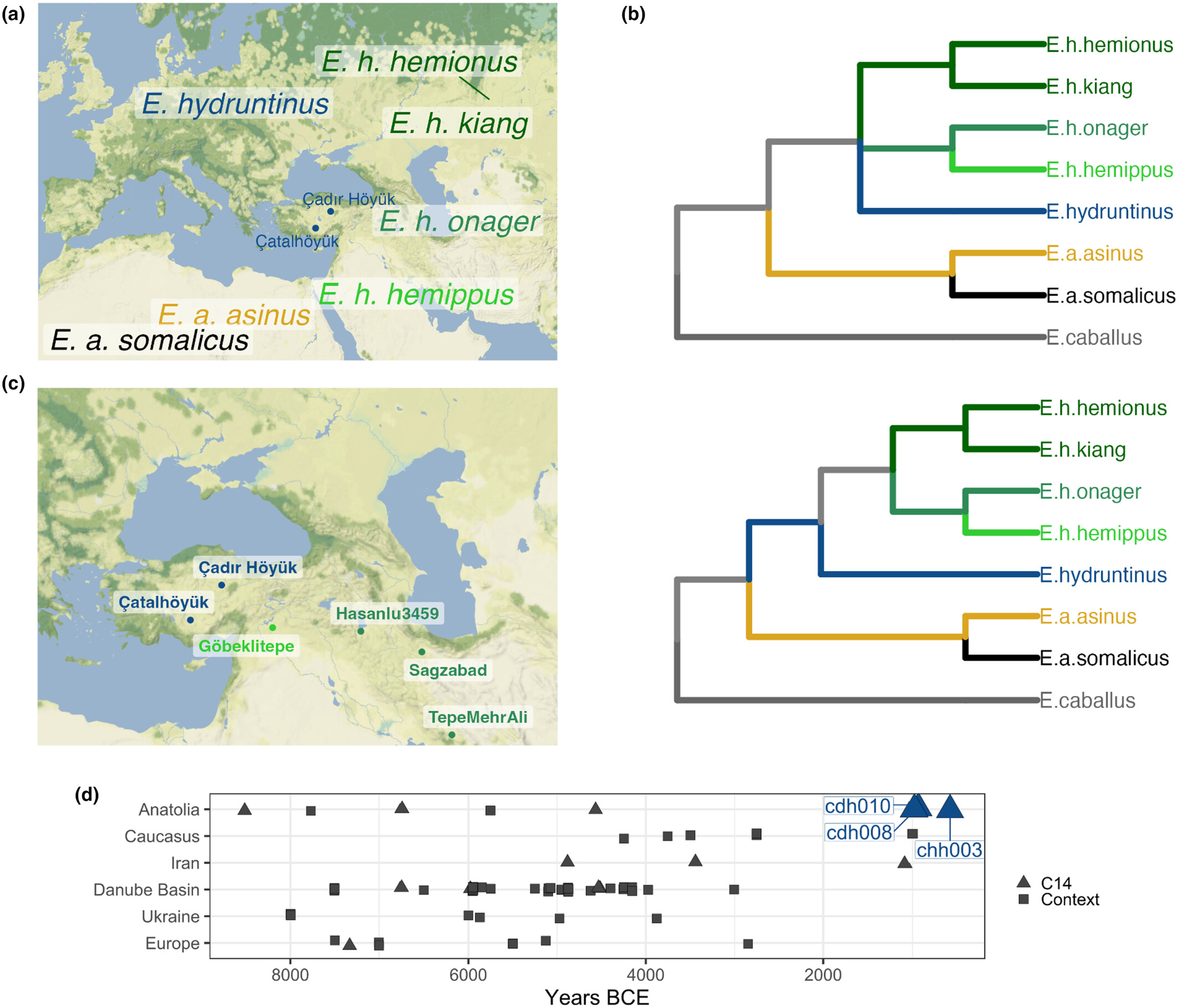Our researchers present palaeogenomes of three morphologically unidentified Anatolian equids dating to the first millennium BCE, sequenced to a coverage of 0.6–6.4×. Mitochondrial DNA haplotypes of the Anatolian individuals clustered with those of Equus hydruntinus (or Equus hemionus hydruntinus), the extinct European wild ass, secular name ‘hydruntine’. Further, the Anatolian wild ass whole genome profiles fell outside the genomic diversity of other extant and past Asiatic wild ass (E. hemionus) lineages. These observations suggest that the three Anatolian wild asses represent hydruntines, making them the latest recorded survivors of this lineage, about a millennium later than the latest observations in the zooarchaeological record. The mitogenomic and genomic analyses indicate that E. h. hydruntinus was a clade belonging to ancient and present-day E. hemionus lineages that radiated possibly between 0.6 and 0.8 Mya. Our researchers also find evidence consistent with recent gene flow between hydruntines and Middle Eastern wild asses. Analyses of genome-wide heterozygosity and runs of homozygosity suggest that the Anatolian wild ass population may have lost genetic diversity by the mid-first millennium BCE, a possible sign of its eventual demise.
The article is authored by Mustafa Özkan, Kanat Gürün, Eren Yüncü, Kıvılcım Başak Vural, Gözde Atağ, Ali Akbaba, Fatma Rabia Fidan, Ekin Sağlıcan, Ezgi N. Altınışık, Dilek Koptekin, Kamilla Pawłowska, Ian Hodder, Sarah E. Adcock, Benjamin S. Arbuckle, Sharon R. Steadman, Gregory McMahon, Yılmaz Selim Erdal, C. Can Bilgin, İnci Togan, Eva-Maria Geigl, Anders Götherström, Thierry Grange, Füsun Özer, and Mehmet Somel.




